Viburnum shrubs are very popular plants to grow, and they’re famous for their big, showy flowers, colorful autumn leaves, and easy-going nature. But while viburnums are quite hardy plants and they’re naturally resistant to most pests, viburnums can be susceptible to viburnum leaf beetles, which can cause a lot of damage to the plant’s leaves and stems.
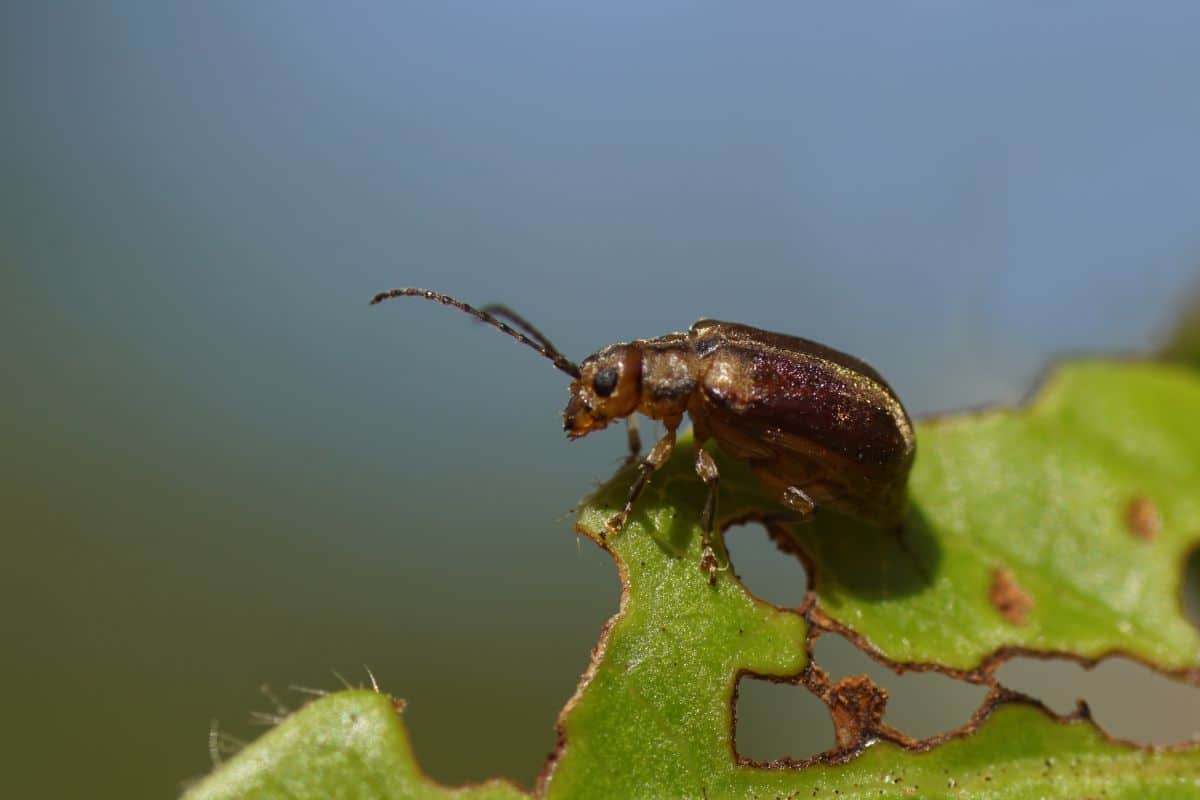
Viburnum leaf beetles are native to Asia and Europe, but unfortunately, they found their way to other areas of the globe, likely in international plant shipments. These pesky insects were first reported in Canada in 1978, and they spread to New York state by 1996. Today, viburnum leaf beetles are common problems in many areas of the United States, and they can skeletonize viburnum leaves in a short period of time.
If your viburnum shrub appears to be suffering from a pest infestation, there’s a good chance you’re dealing with the destructive viburnum leaf beetle. Luckily, there are plenty of all-natural ways to control these pests, and we’ll teach you how to do just that in this easy guide!
Jump to:
- How to identify viburnum leaf beetles
- What does viburnum leaf beetle damage look like?
- What plants do viburnum leaf beetles target?
- 8 tips for controlling viburnum leaf beetles all naturally
- 1. Plant resistant cultivars.
- 2. Prune away damage.
- 3. Try handpicking.
- 4. Use organic insecticidal soap sprays.
- 5. Give Neem a go.
- 6. Experiment with organic horticultural oils.
- 7. Grow beetle-repelling companion plants.
- 8. Attract natural predators.
- Frequently asked questions
- Summary
How to identify viburnum leaf beetles
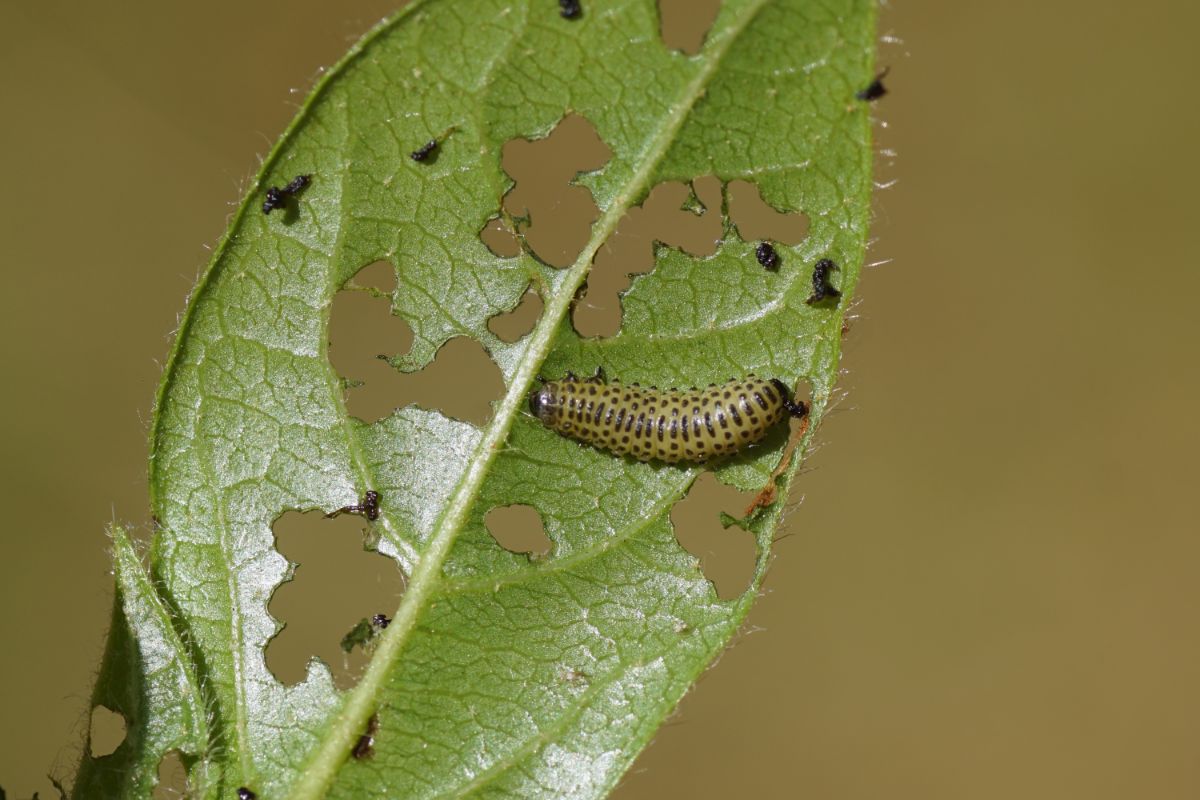
While viburnum leaf beetles can do a lot of damage, they’re actually quite small, and it’s often difficult to find them on viburnum plants. Sometimes you’ll need to inspect shrubs very closely to find a single viburnum leaf beetle or grub, but they can often be found hiding on the undersides of plant leaves.
Adult viburnum leaf beetles measure ¼” long, and they have light brown to tan colored carapaces, which help them to blend into plant foliage. The beetle grubs measure about ⅓” and they have soft, light-colored bodies with dark speckling.
Since they are quite subtle looking, it can often be difficult to differentiate viburnum leaf beetles from other insects. However, viburnum leaf beetles feed exclusively on viburnum plants, so if you find a lot of beetles on your viburnum shrub, there’s a good chance you’re looking at viburnum leaf beetles!
What does viburnum leaf beetle damage look like?
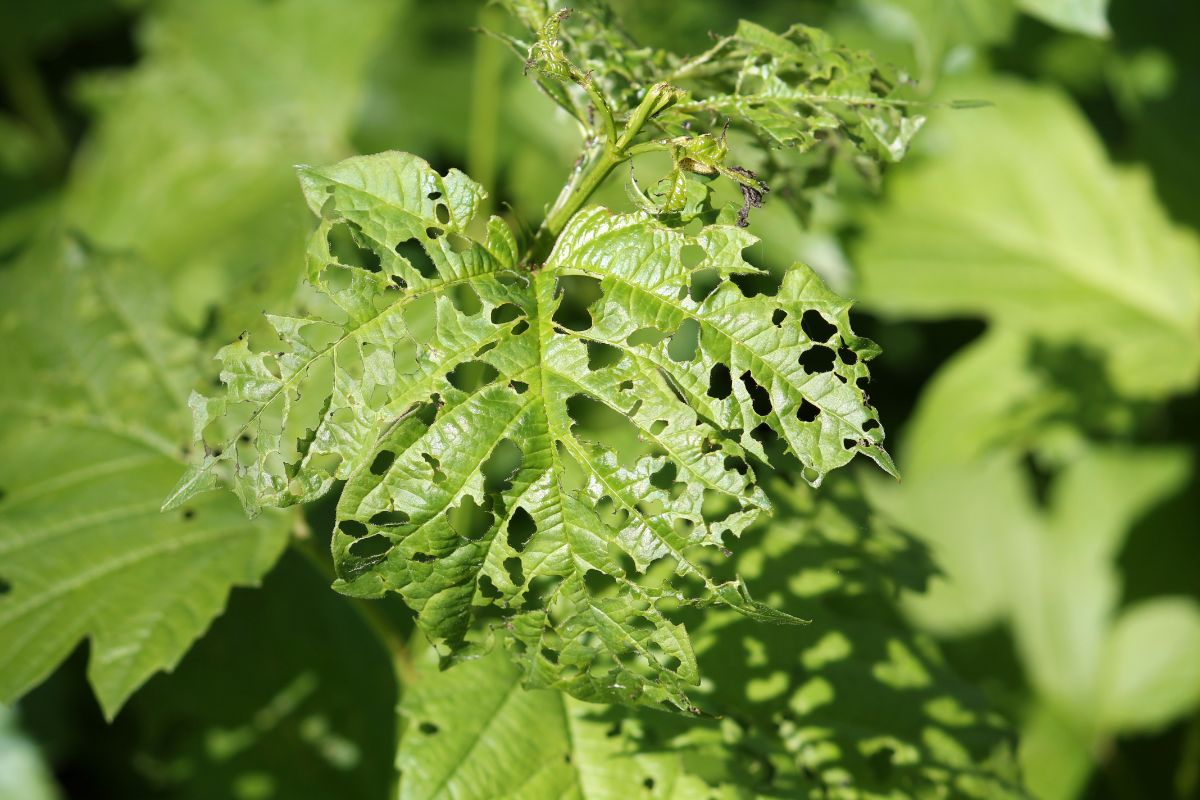
Both viburnum leaf beetles and their grubs damage plants, and they can do a lot of harm in a limited time. Often, these insects will riddle plant leaves with holes; however, if the infestation is large, these pests can skeletonize plants and chew leaves down to nubs.
Gardeners usually notice damage on their plants in early summer, but viburnum leaf beetles can continue to feed on viburnum shrubs until the first hard frost of fall. Unfortunately, these insects usually lay eggs in autumn, which can overwinter in the soil and emerge again in spring. So if you’ve had a problem with viburnum leaf beetles in the past, there’s a good chance they’ll crop up in your garden again and again.
Typically, viburnum leaf beetles will damage a plant’s leaves, which can cause aesthetic issues, but the damage is usually not severe enough to kill the viburnum plant. That said, if a plant is defoliated by beetles several years in a row, the stress on the plant can stunt its growth and weaken it over time. If the infestation continues, the affected plant may eventually stop growing and die back.
What plants do viburnum leaf beetles target?
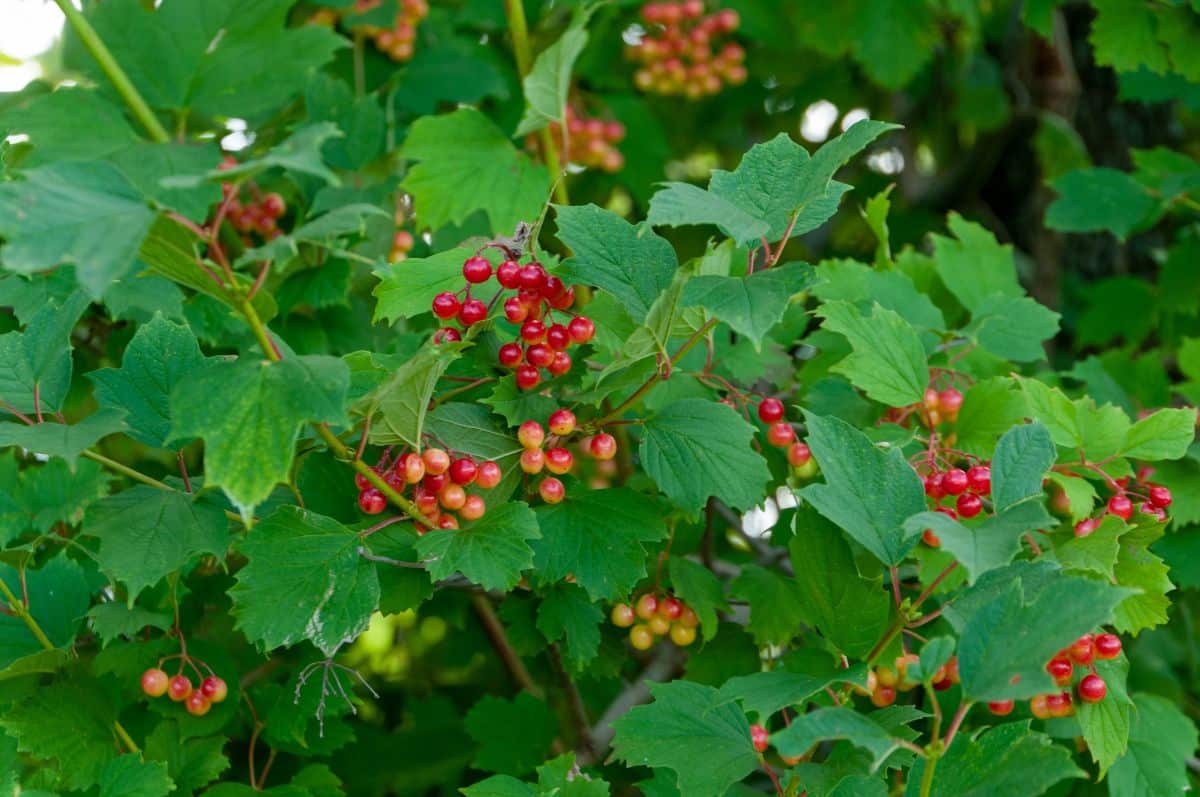
While viburnum leaf beetles will feed on most plants in the viburnum family, including snowball bushes, arrowwood, nannyberry, and hobblebushes, some viburnum species are more likely to be targeted than others. Specifically, viburnum leaf beetles seem to prefer feeding on the foliage of wayfaring trees, European highbush cranberries, and the downy arrowwood shrub over other species of viburnum.
Some growers opt to avoid planting particular species of viburnum in their yards to avoid issues with leaf beetles. However, if you love the look of viburnums, you should still be able to grow them successfully, although you may want to take a few precautions to safeguard your plants against viburnum leaf beetles.
8 tips for controlling viburnum leaf beetles all naturally

Chemical pesticides can do a lot of damage to ecosystems, and they have been linked to the decline in the populations of bees and other pollinators. While the most common way to deal with viburnum leaf beetles is to use pesticides, there are other effective and all-natural means of controlling and preventing these pests. If you keep an organic garden or you have a pollinator habitat, below are the best ways to manage viburnum leaf beetles and keep your shrubs looking their best.
1. Plant resistant cultivars.
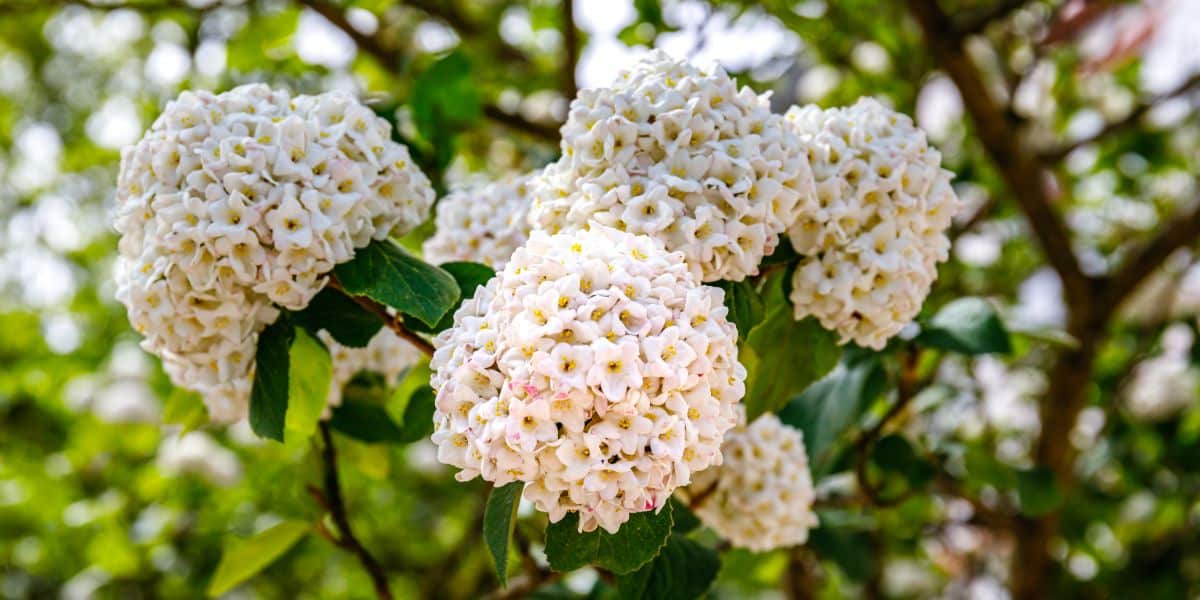
While viburnum leaf beetles will feed on a wide variety of viburnum plants, they do have their preferences, and there are a few viburnum species that they tend to leave alone. For this reason, one of the single best ways to prevent viburnum leaf beetles from ever becoming a problem in your garden is to only grow resistant cultivars from the outset.
Luckily, some of the most popular viburnum species are actually the ones viburnum beetles leave alone. Some of the best, naturally resistant viburnum shrubs to grow include:
- Korean spice viburnum (Viburnum carlesii)
- Doublefile viburnum (Viburnum plicatum)
- Leatherleaf viburnum (Viburnum rhytidophyllum)
- Dawn viburnum (Viburnum bodnantense)
- Tea viburnum (Viburnum setigerum)
- Judd viburnum (Viburnum juddii)
- David viburnum (Viburnum davidii)
- Siebold viburnum (Viburnum sieboldii)
2. Prune away damage.
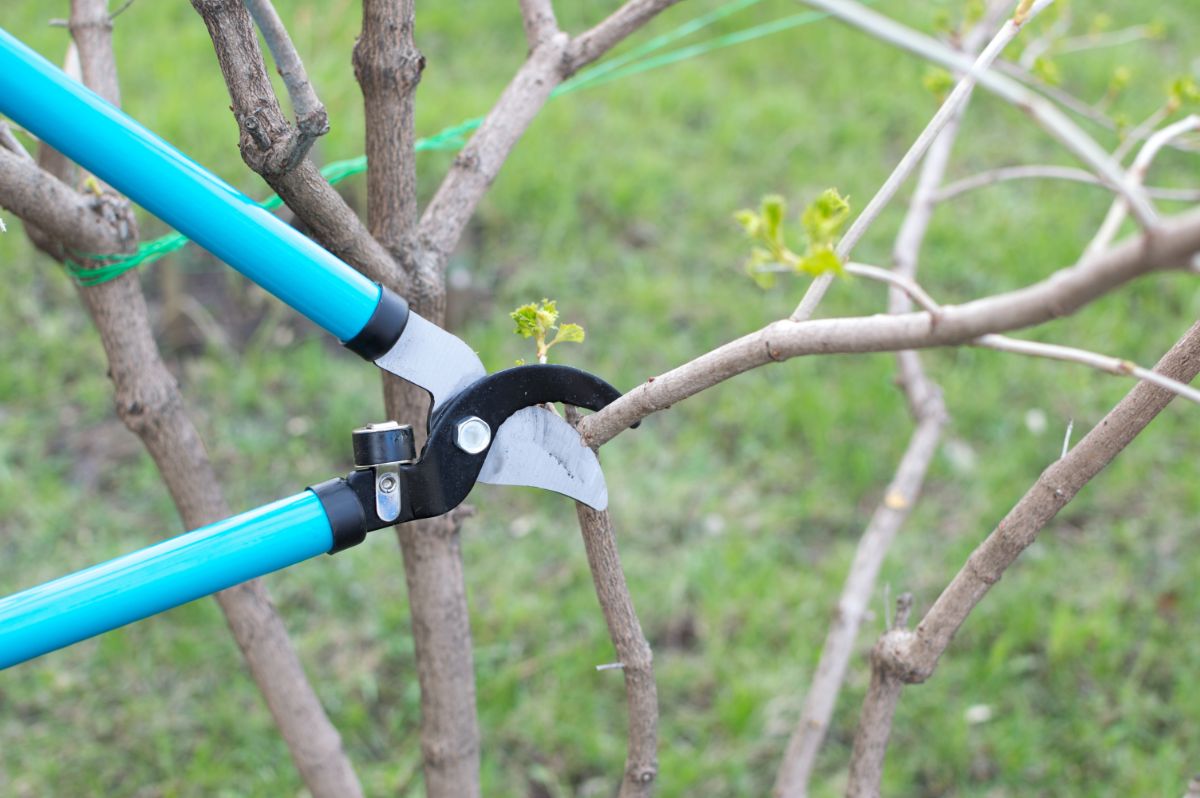
Viburnum leaf beetles lay their eggs in the bark of viburnum twigs and branches in late summer to fall, and then the eggs overwinter. When spring arrives, and temperatures begin to climb, the eggs hatch, and the viburnum larvae begin to feed on plant leaves. However, you can often interrupt this cycle with a well-timed pruning of your viburnum shrubs.
To do this, carefully inspect your viburnum shrubs early in spring for any signs of viburnum leaf beetle eggs. Eggs are often laid at the terminal ends of small branches and twigs, and they slightly resemble hard bodied scale. If you see any eggs, prune these areas away to prevent a future generation of leaf beetles, and be sure to destroy any infected plant material either by burning or by bagging and disposing of the old plant debris in the trash.
Even after the beetle larvae emerge later in the season, pruning may help mitigate the damage to your plants and reduce the beetles’ ability to spread. If you notice that some sections of your plant seem to have more beetle larvae than others, you may want to cut these areas away to prevent the larvae from spreading and maturing into adults.
3. Try handpicking.
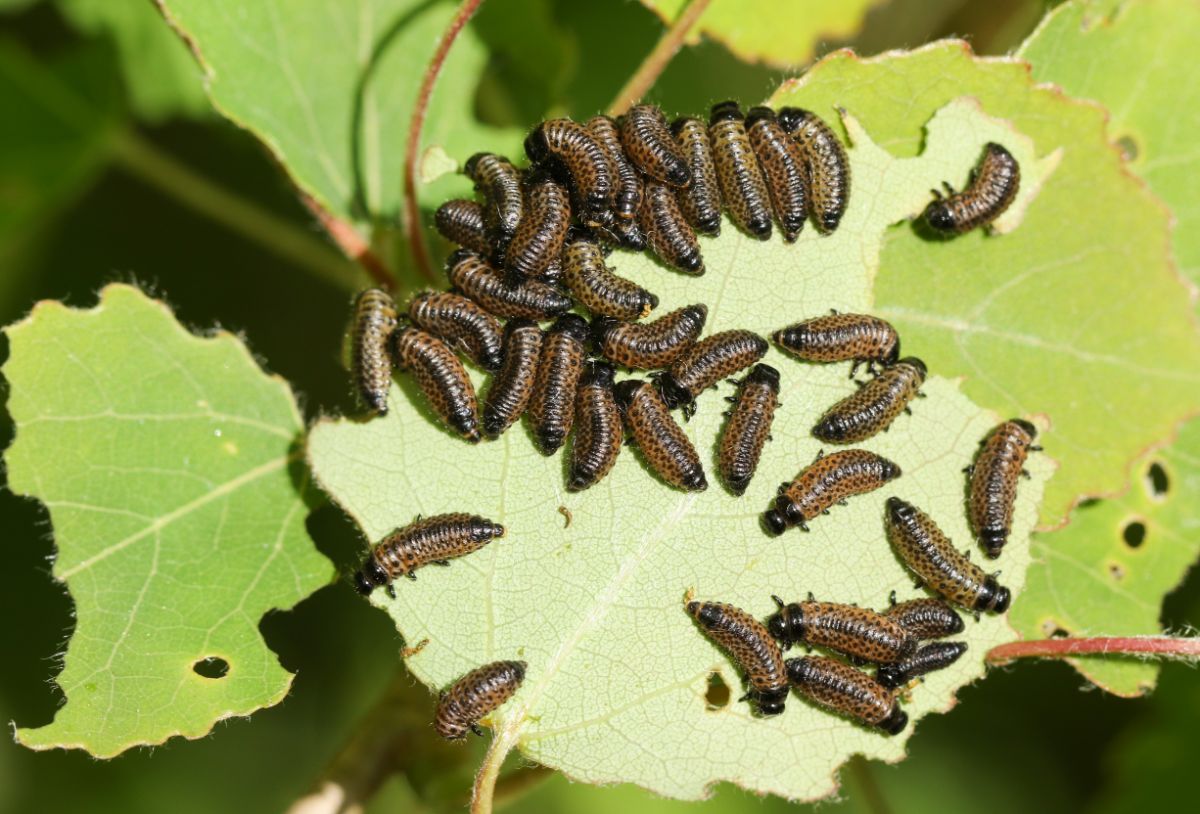
Adult viburnum leaf beetles often fly or drop to the ground when disturbed, which can make handpicking a challenge. A workaround is to use an insect vacuum or place a bucket of soapy water underneath infected branches and then knock beetles into the suds below with a stick. This can help remove some leaf beetles from your garden, but you’ll likely need to repeat this process multiple times to see the benefits.
Slow-moving leaf beetle larvae are generally easier to handpick, and you can drop them into a bucket of soapy water when you’re done. If you have a large infestation of insects, this usually won’t eliminate all of them, but it can take a lot of pressure off your viburnum shrubs.
4. Use organic insecticidal soap sprays.
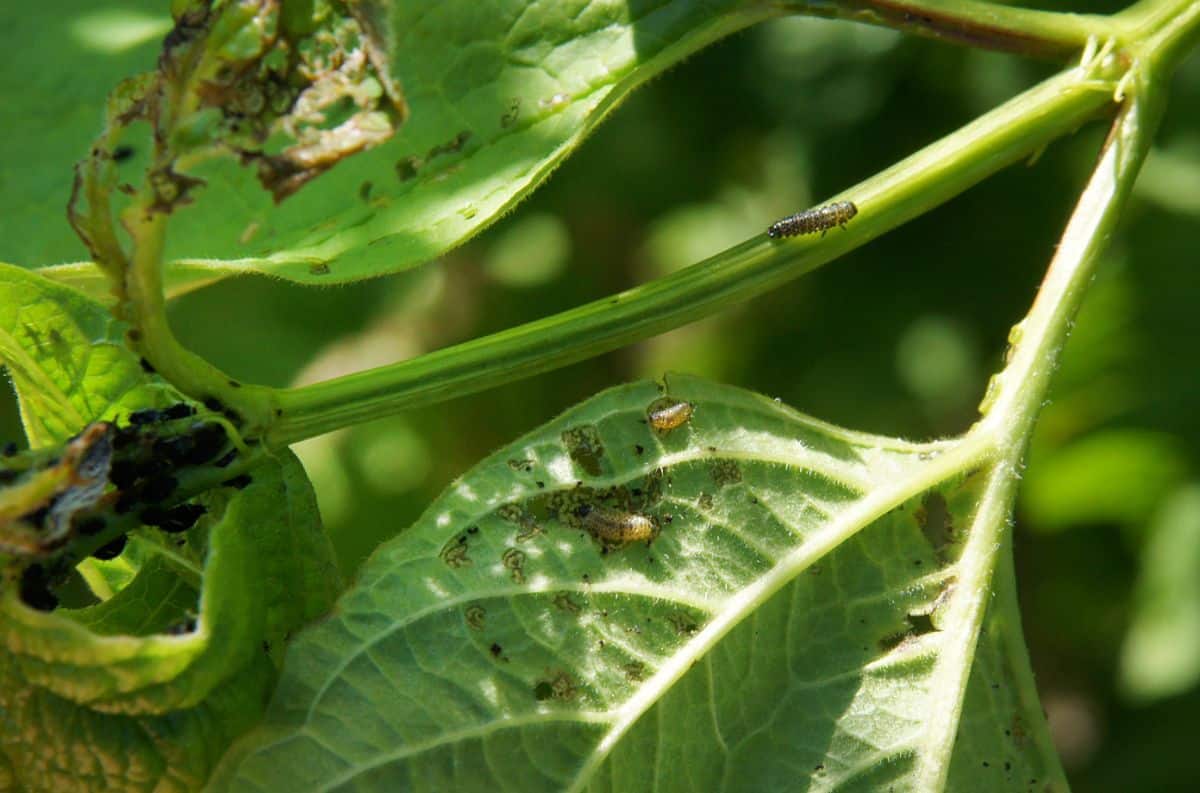
Organic insecticidal soap sprays are generalized pesticides that can work on a number of different insects, including viburnum leaf beetles. These products usually work by blocking off the insects’ breathing holes, which causes them to suffocate. Unpleasant as it is, these products are quite effective, and many of them are approved for organic gardens.
If you prefer to make your own insecticidal soap sprays, try adding a few drops of Castile soap to a spray bottle with water. Give the mixture a good shake, and then apply it all over your infected plant. For best results, insecticidal soap sprays should usually be applied every 7 to 10 days until you no longer see signs of pests. It’s also recommended to apply these sprays in the early morning or late evening when the sun isn’t high overhead.
One thing to note about insecticidal soaps is that they are generalized pesticides. This means they can kill many different insects, including non-target pollinators. To avoid this, only spray insecticidal soaps on infected plants and don’t apply these products to plant flowers.
5. Give Neem a go.
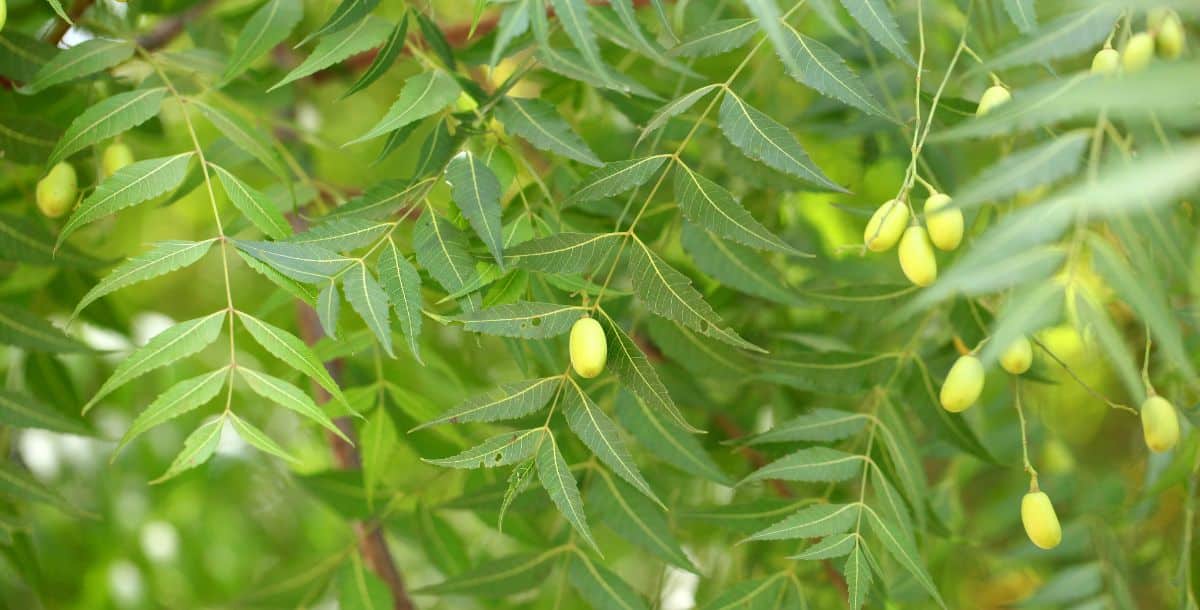
Neem oil sprays work much the same as insecticidal soap sprays, and they are also approved for organic gardens. Neem oil is produced from the seeds of the neem tree, and it’s often used in cosmetic products, although it’s popular in organic gardening circuits as well.
Like many other spray products, neem should be applied when the sky is overcast, or the sun is setting, as neem can cause sun damage to plants when it’s used in direct sun. This product should also be applied in 7 to 10-day intervals for maximum pest protection. Finally, avoid spraying neem on plant flowers so it doesn’t come in contact with non-target pollinators and other beneficial insects.
For even more bug-busting “oomph,” you can combine neem oil with insecticidal soap sprays by mixing a tablespoon or two of neem oil with a few drops of Castile soil and blending the mixture with water.
6. Experiment with organic horticultural oils.
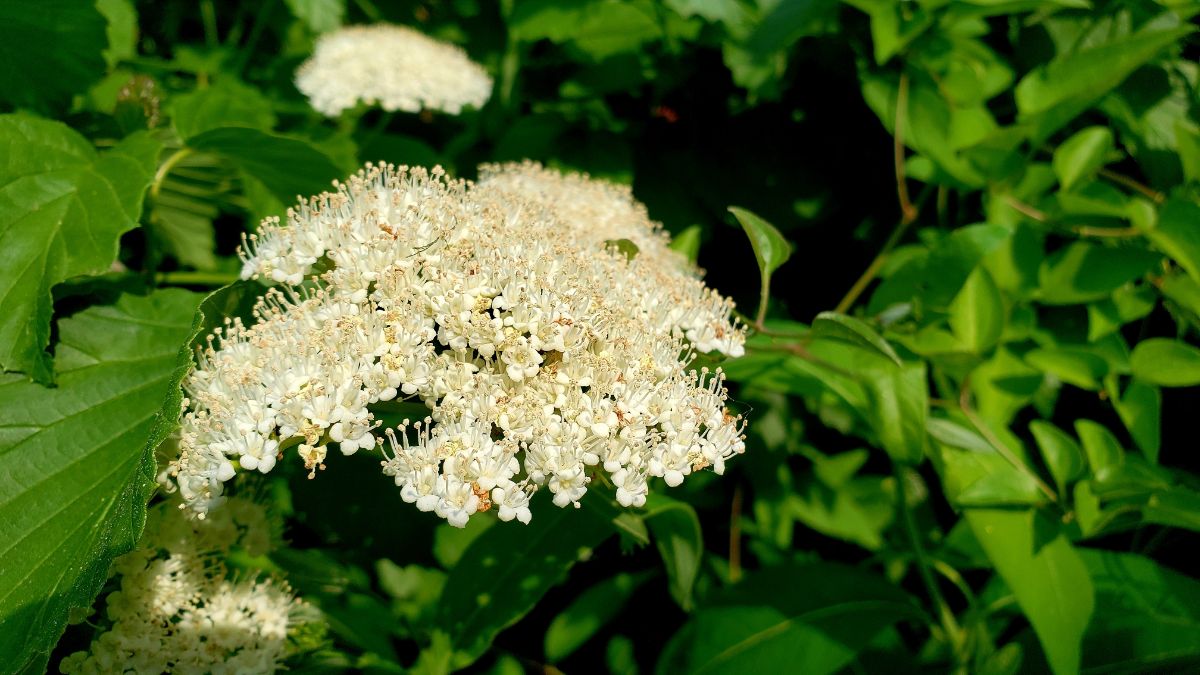
Some horticultural oils are also approved for organic gardens, and they function similarly to insecticidal soap sprays and neem oil. These products can work on viburnum leaf beetles at all stages of their lifecycles, including adults, larvae, and even eggs. However, they are generalized pesticides that can kill other insects, so they should not be used on plant flowers.
According to Cornell University, horticultural oil sprays can be just as effective against viburnum leaf beetles as chemical pesticides, and they’re much less likely to harm beneficial insects. According to one study, the best time to apply horticultural oils for leaf beetle control is in mid-April, before the beetle eggs hatch.
7. Grow beetle-repelling companion plants.
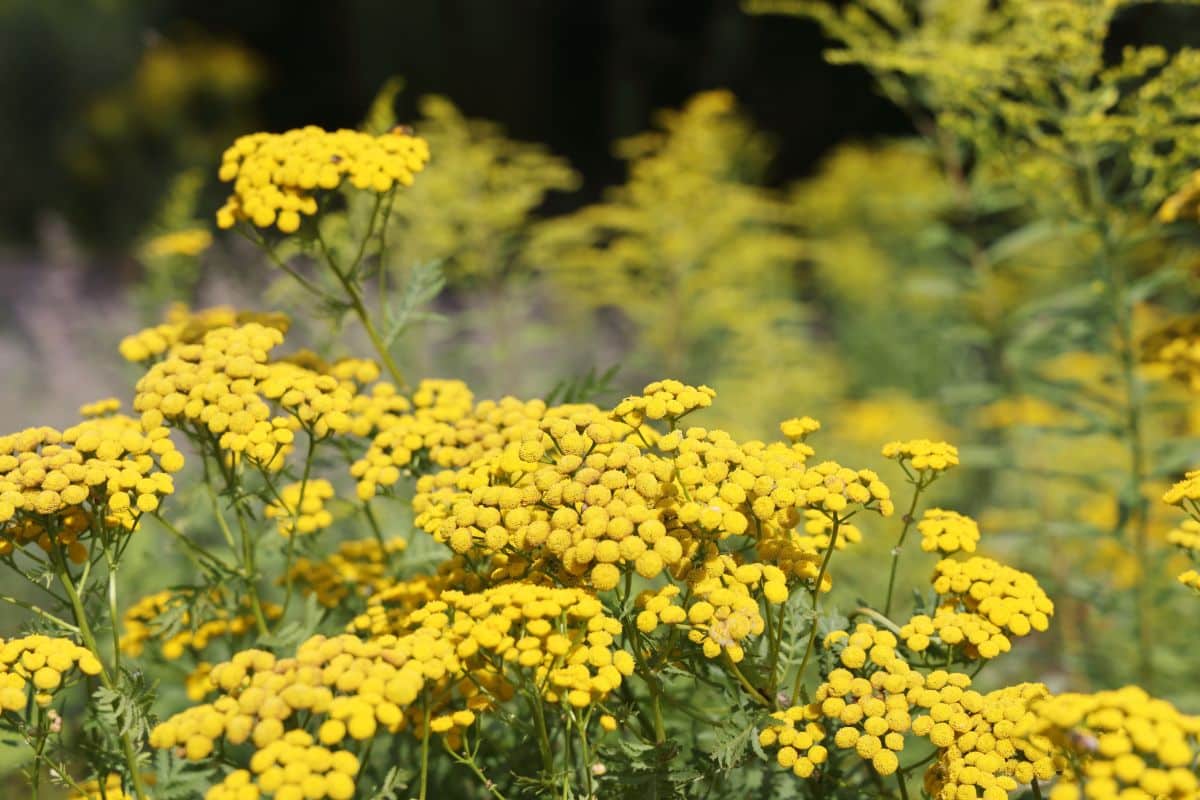
Companion planting is the process of growing particular plants together that benefit each other. Some plants can boost the growth of their neighbors or improve the flavor of nearby edible vegetables and fruit. However, companion plants can also help repel an assortment of common garden pests, including pesky viburnum leaf beetles.
Strongly scented herbs are often the best companion plants to control beetles naturally. Plants in the allium family, like garlic, chives, onions, and ornamental alliums, have been shown to repel a variety of beetles, and they may help repulse viburnum leaf beetles too. Other fragrant plants like tansy, nasturtiums, marigolds, catnip, and rosemary are also excellent at repelling many different beetle species from both ornamental and edible gardens.
8. Attract natural predators.
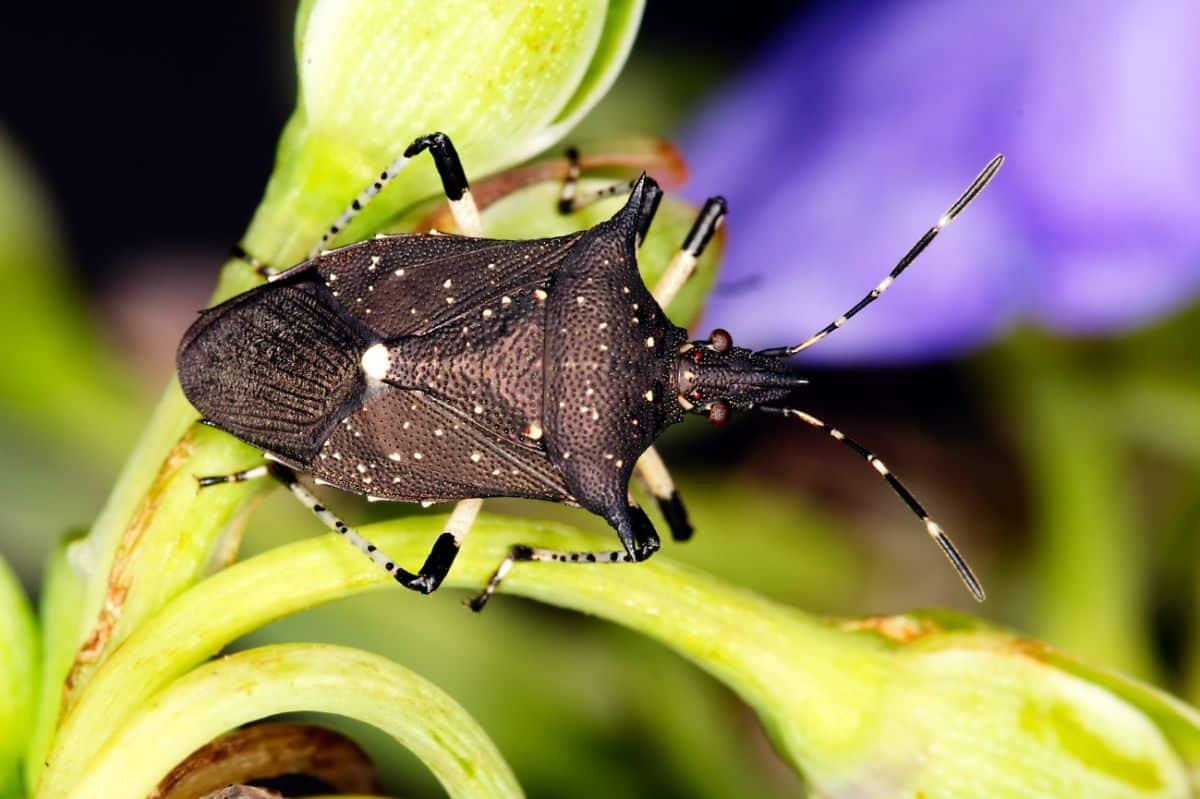
Viburnum leaf beetles may be the last thing you want to see in your garden, but some insects love leaf beetles… as a snack! There is no one insect predator that specializes in eating viburnum leaf beetles; however, a number of different insects can prey on leaf beetles and help control pest populations without you needing to do a thing.
Ladybugs, spined soldier bugs, and lacewings all feed on viburnum leaf beetle grubs, while ladybugs, spined soldier bugs, and spiders feed on adults. Wild birds also love munching on an assortment of insects, beetles included!
If you want to attract these natural beetle predators to your garden, grow flowering herbs and plants like yarrow, scented geranium, tansy, milkweed, and angelica near your viburnum shrubs. Adding a bird feeder or bird bath near your plants can also encourage birds to take up residence in your garden, and they’ll feast on viburnum beetles as well as other pest insects too!
Frequently asked questions
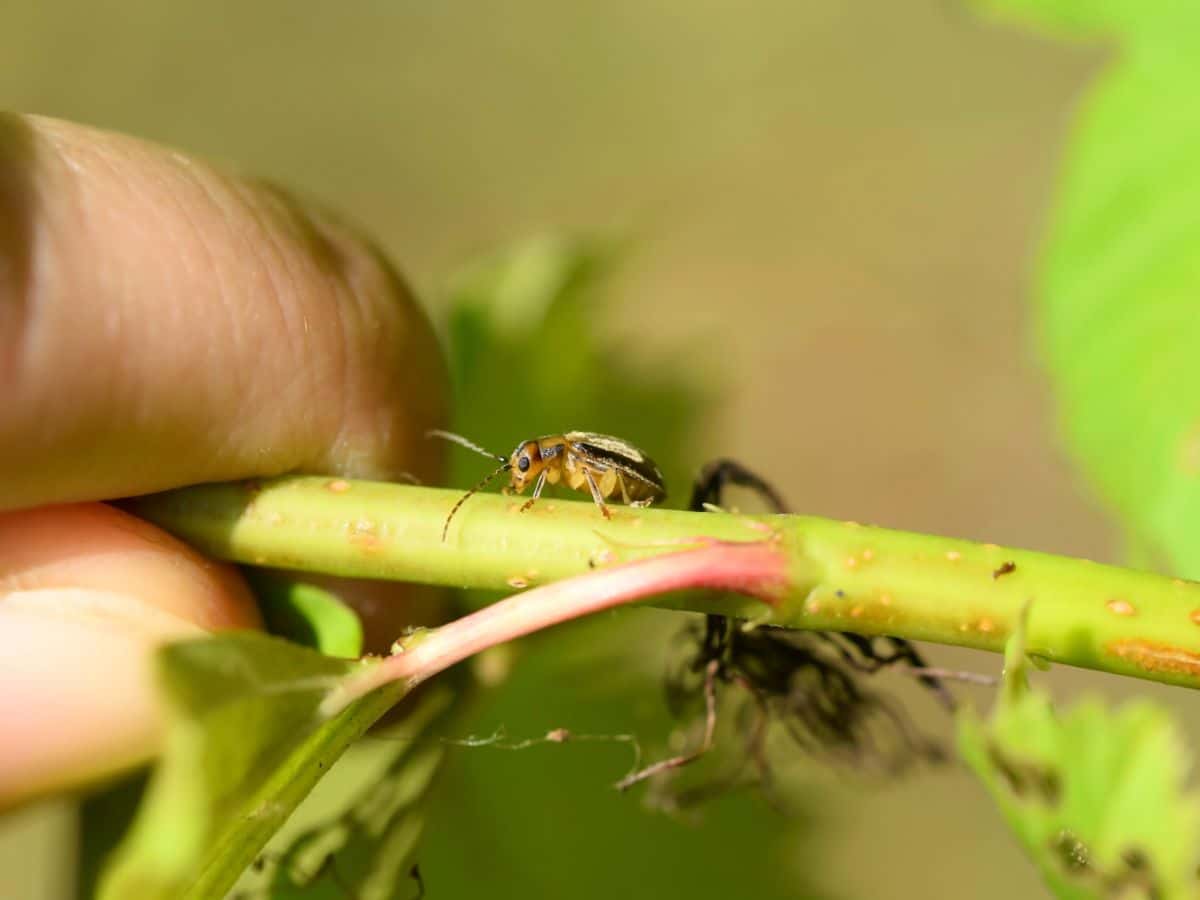
No predatory insect specializes in feeding on viburnum leaf beetles specifically; however, there are a number of different insects that will devour leaf beetles and help rid your shrubs of pests for good. Ladybugs, lacewings, spined soldier bugs, spiders, and birds will often feed on viburnum leaf beetles, and attracting these creatures to your garden can do a lot to control pests naturally.
Viburnum leaf beetles are one of the most common pests on viburnum shrubs, and they can cause significant damage, including holey or lacey leaves. As infestations progress, viburnum leaf beetles can skeletonize leaves or even defoliate entire plants!
The first step to saving a viburnum shrub that’s struggling is to identify what’s ailing the plant. If pests are to blame, organic insecticidal soap or neem oil sprays can often help, and horticultural oils work quite well too. Viburnums can also struggle from fungal or environmental issues, such as over- or underwatering, which require different treatment methods.
One of the great things about viburnums is that they are very low-maintenance plants, and they are generally pest free. Beyond viburnum leaf beetles, there aren’t a lot of pests that feed on these shrubs, and they’re good solutions for any gardener who wants a striking plant that doesn’t require a lot of fuss.
Sections of viburnums can sometimes die off due to fungal issues or pest activity. Alternatively, sometimes viburnums can get top-heavy, and some of their branches can break, resulting in sections that look like they’re dying. The breaks may not be evident at first, but if you inspect the plant, you may find injured stems or broken branches, which can sometimes be remedied with good pruning.
Viburnums can be pruned when they’re dormant in winter, or you can cut them back immediately after flowering. As with other plants, avoid pruning your viburnum shrubs in hot weather, and never cut back more than ⅓ of your plant at one time to avoid stressing your plant out.
Summary
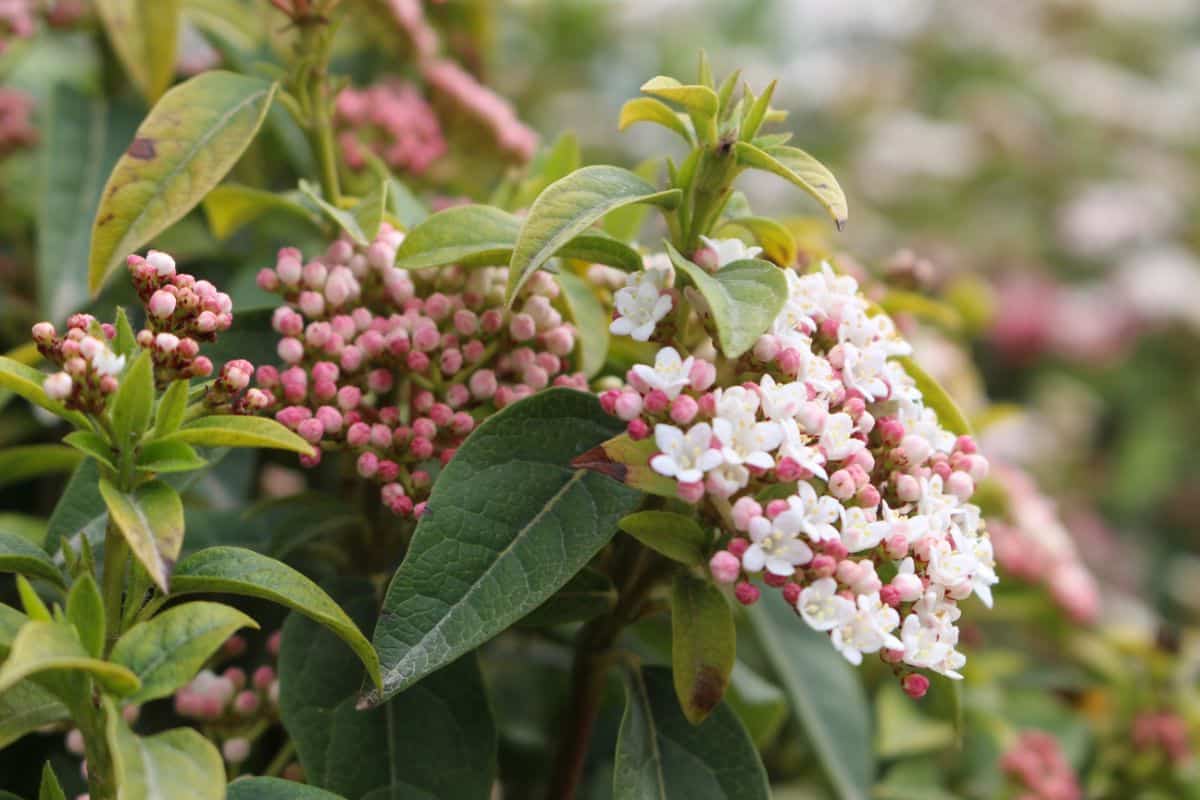
Viburnum leaf beetles are one of the most common pests to invade viburnum shrubs. But just because troublesome leaf beetles have invaded, it doesn’t mean you need to resort to chemical pesticides. From companion planting to natural sprays, there are lots of ways to treat leaf beetle infestations that are effective and safe for you and the environment too.
To learn more about controlling pests naturally, check out our easy guide on common garden insects or read about companion planting for pest insects right here.

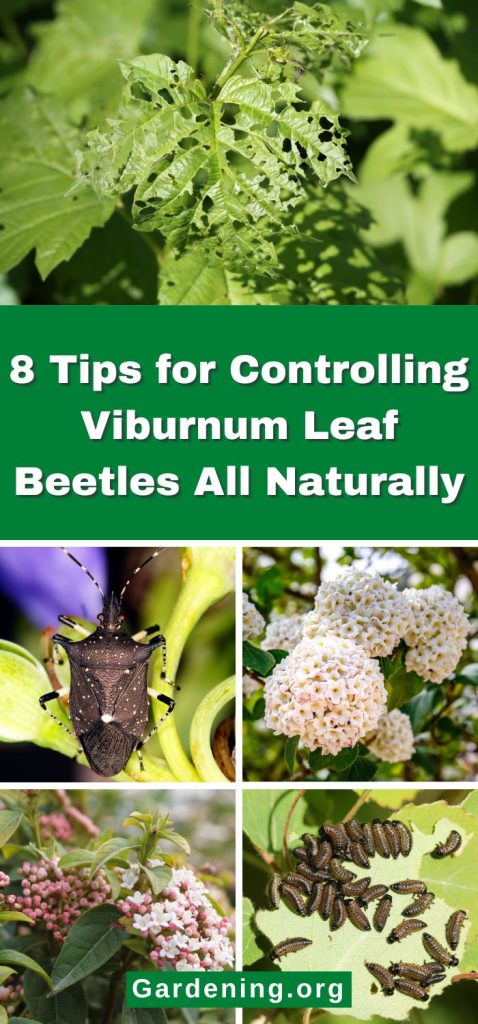
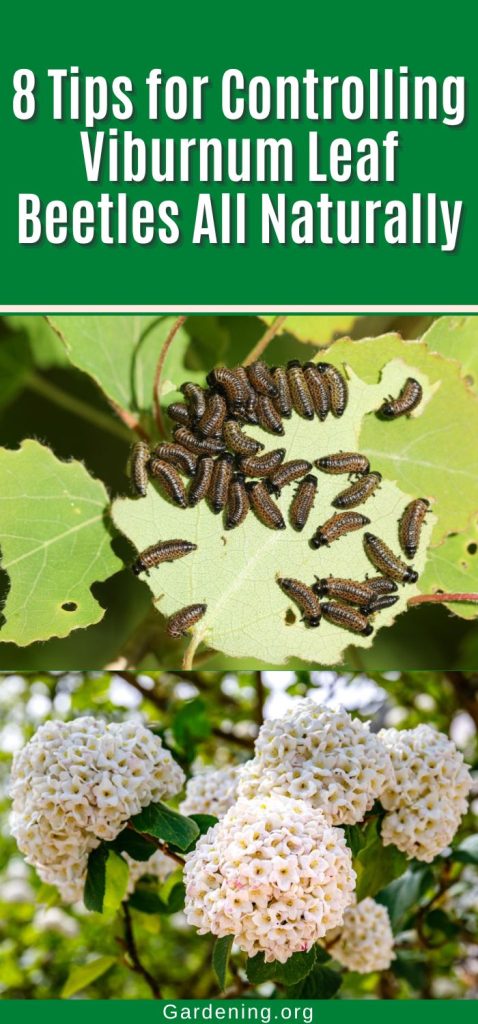
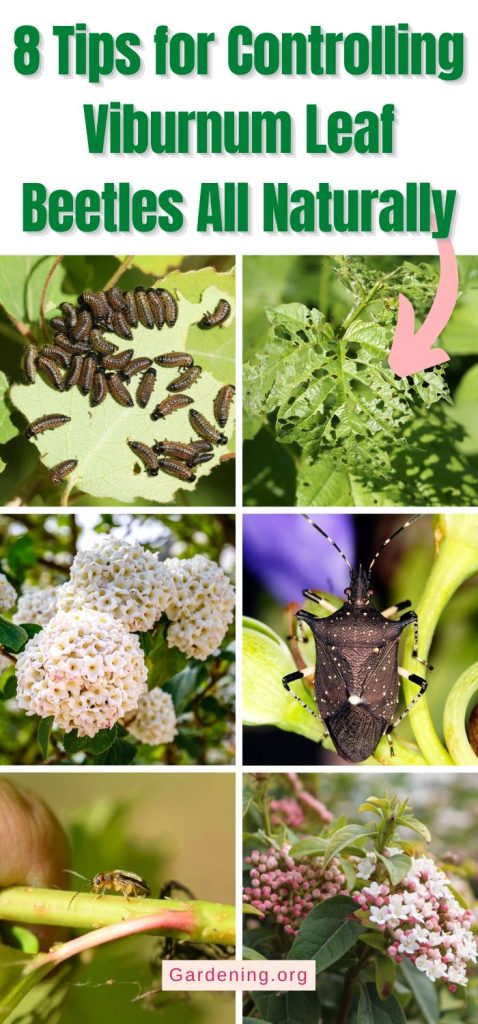
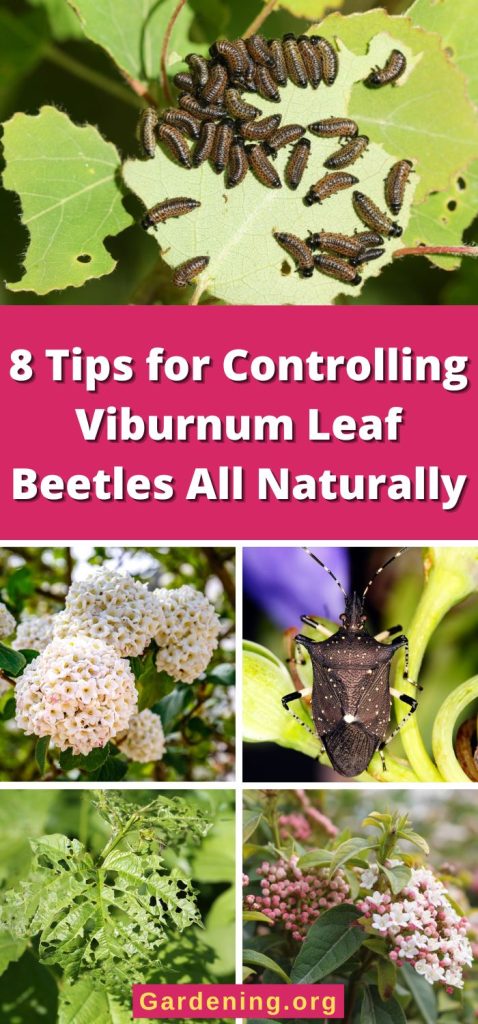



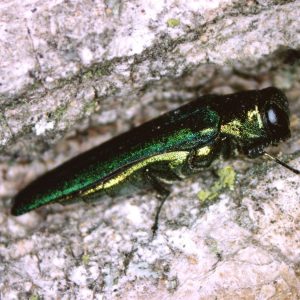
Leave a Reply